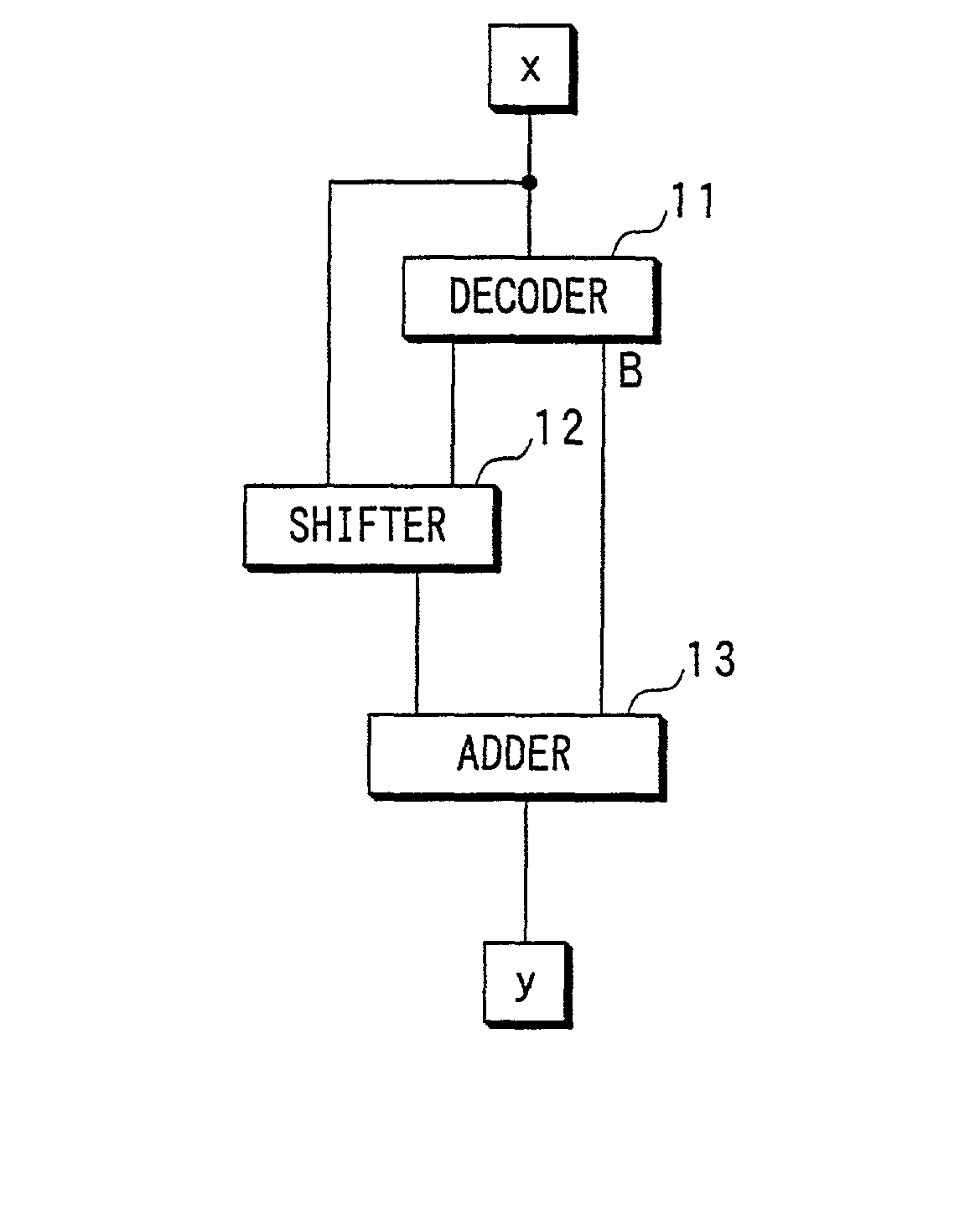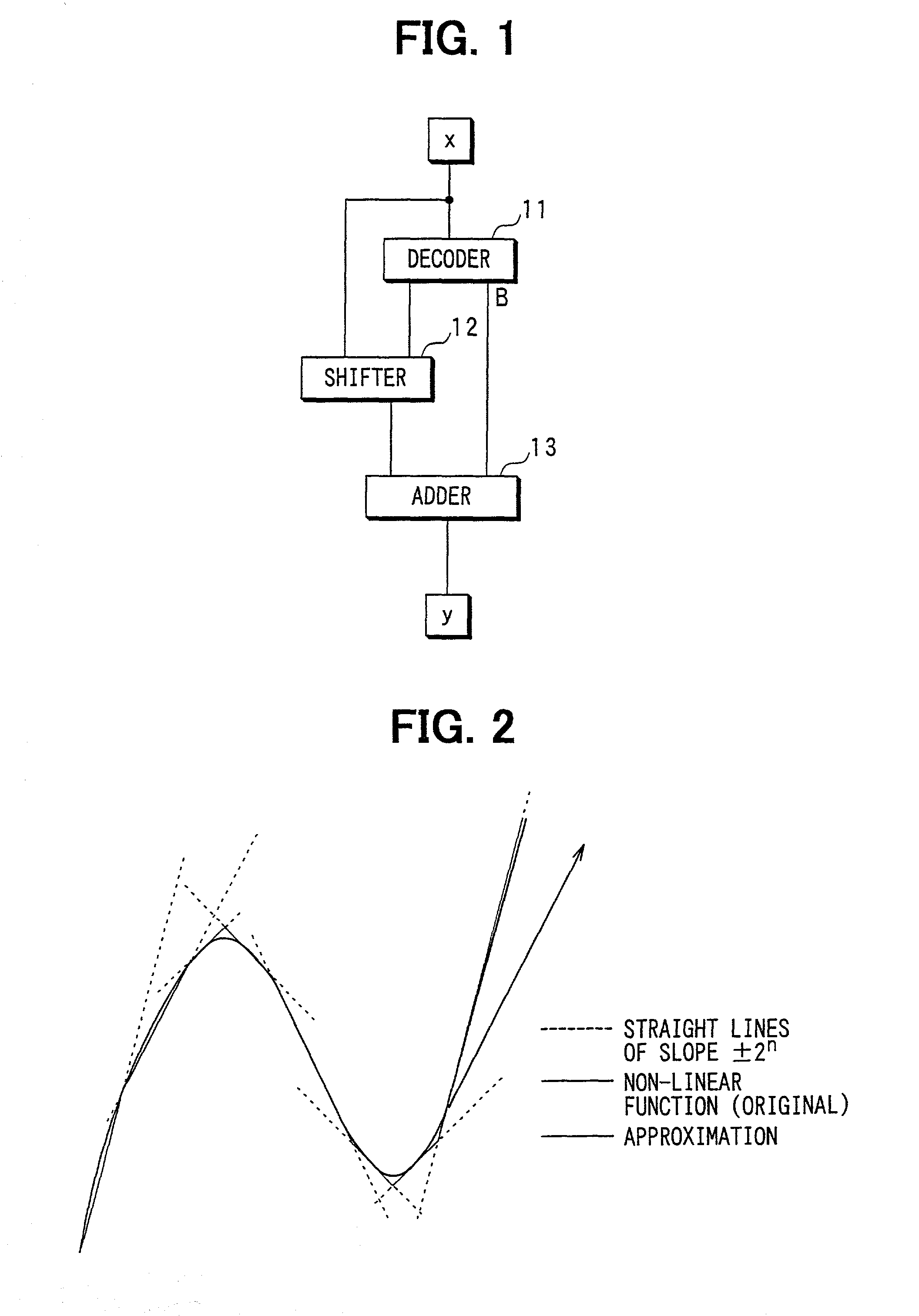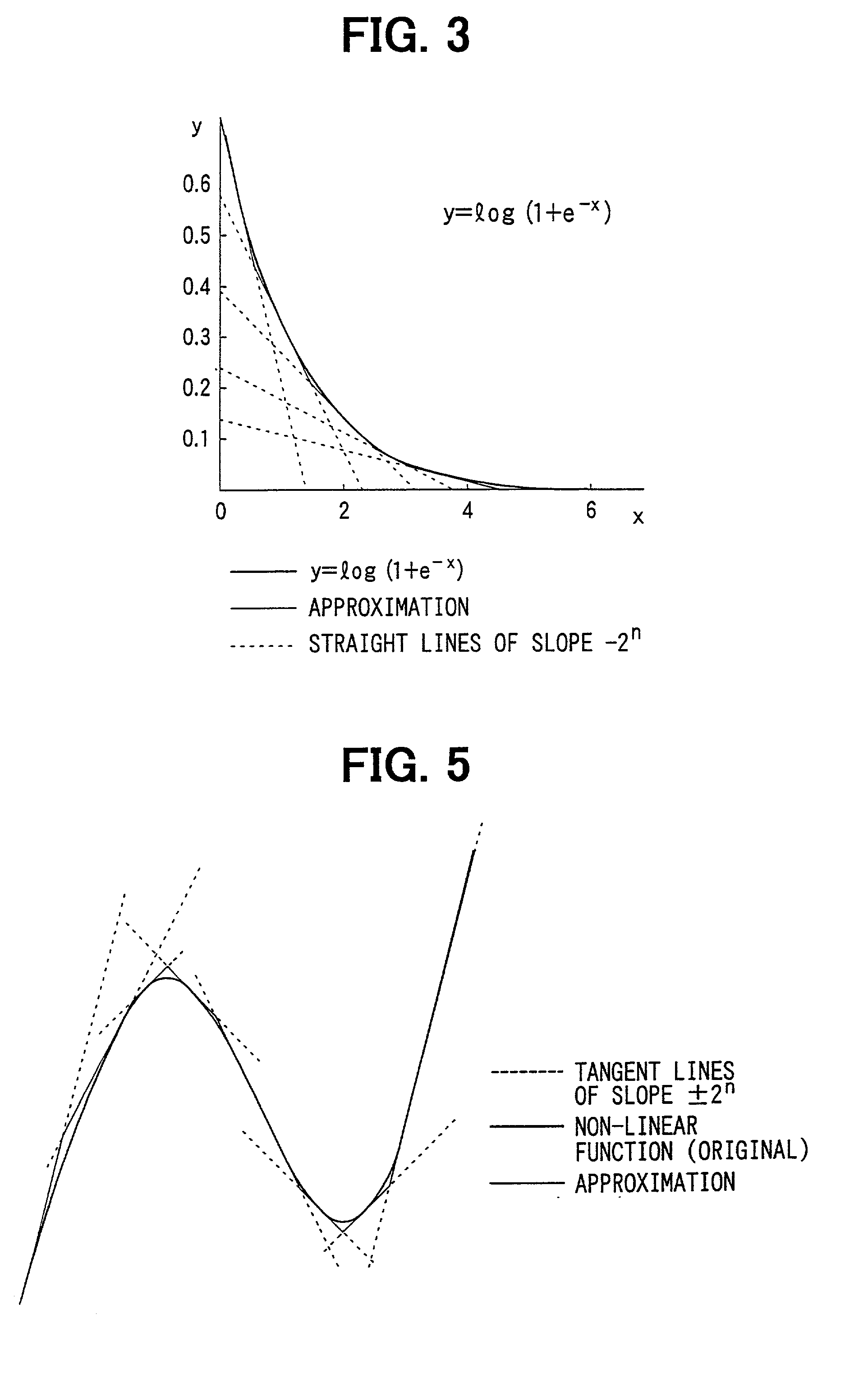Approximate calculator for non-linear function and map decoder using same
a calculator and non-linear technology, applied in the field of approximate calculators for non-linear functions, can solve the problems of inability to implement calculators by hardware or software, large lookup tables, and relatively complex computations, and achieve the effect of a relatively small circui
- Summary
- Abstract
- Description
- Claims
- Application Information
AI Technical Summary
Benefits of technology
Problems solved by technology
Method used
Image
Examples
first embodiment
[0036] (First Embodiment)
[0037] Referring to FIG. 1, a calculator according to a first embodiment of the present invention receives input data x, and generates an approximate value y of a non-linear function using the input data x. The calculator includes a decoder 11, a shifter 12 and an adder 13. The non-linear function is linear-interpolated interval by interval as shown in FIG. 2. Specifically, straight lines Y=A.multidot.X+B each of which has a slope of .+-.2.sup.n (n is an integer) are selected. The slopes of the selected straight lines are, for example, 4, 2, 1, 0.5, 0.25 and the like.
[0038] The Y-intercept B of each of the selected straight line is determined so that the error based on the differences between the approximate values y and the actual values y.sub.a at sampling points is minimized. Therefore, if sufficiently many points are selected as the sampling points, an approximate value that is sufficiently close to the actual value can be obtained by using the selected ...
second embodiment
[0043] (Second Embodiment)
[0044] A calculator according to a second embodiment of the present invention receives input data a and b, and calculates an approximate value of a formula "max (a, b)+log (1+e.sup.-.vertline.a-b.vertline.)". This calculator is incorporated in a MAP decoder. The MAP decoder is incorporated in a turbo decoder shown in FIG. 7 as a soft-output decoder 101, 102 as described above, and implemented by software that includes the process shown in FIG. 8 or hardware shown in FIG. 9. The calculator according to the present embodiment is used for calculating the probabilities .alpha. and .beta. at steps 203 and 204 utilizing log-BCJR algorithm as described above, when the MAP decoder is implemented by software.
[0045] In order to obtain the probabilities .alpha. and .beta., putting .alpha..sub.1.multidot..gamma..sub.1=e.sup.a and .alpha..sub.2.multidot..- gamma..sub.2=e.sup.b or .beta..sub.1.multidot..gamma..sub.3=e.sup.a and .beta..sub.2.multidot..gamma..sub.4=e.sup.b...
PUM
 Login to View More
Login to View More Abstract
Description
Claims
Application Information
 Login to View More
Login to View More - R&D
- Intellectual Property
- Life Sciences
- Materials
- Tech Scout
- Unparalleled Data Quality
- Higher Quality Content
- 60% Fewer Hallucinations
Browse by: Latest US Patents, China's latest patents, Technical Efficacy Thesaurus, Application Domain, Technology Topic, Popular Technical Reports.
© 2025 PatSnap. All rights reserved.Legal|Privacy policy|Modern Slavery Act Transparency Statement|Sitemap|About US| Contact US: help@patsnap.com



